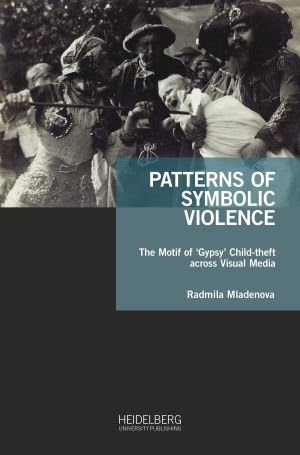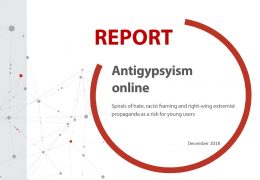
Five hundred years of fake news
The Research Centre on Antigypsyism (RCA) at the University of Heidelberg has published the first volume in its Open Access peer-reviewed series Interdisciplinary Studies on Antigypsyism. The volume Patterns of Symbolic Violence. The Motif of Gypsy’s Child-theft across Visual Media, written in English, traces in minute detail the fiction of the “Gypsies who steal children”; the survey begins with Miguel Cervantes’ La gitanilla as the first proto-racist story going to end up with silent film. Impressive is the amount of material presented on the 180 pages of the volume – especially the selection of images and screenshots from the analyzed films!, and above all, how the function of the child-theft motif changes with historical context and art form. Thus, the study demonstrates that in Dutch history painting the decisive moment in the story is not the actual “kidnapping” but the recognition of the child after two decades – the message is clear: aristocratic blood is invariably noble and will be always recognized by its peers. With the advent of printmaking and illustrated magazines, the motif migrates to other social strata. The implicit message here is that children stolen by “gypsies” can only be “white” ones, thereby ascribing both parents and children to the “white race”. The differentiation vis-à-vis the “gypsies” now serves to integrate the majority society by diverting social tensions onto the minority.
No matter what function the figure of the “gypsy” performs, it has to be marked as “black” in opposition to the “white” majority, and so the Sinti and Roma are branded with this color as a virtually unchangeable racializing feature, regardless of how blond or pale-skinned the actual Sinti or Roma are. In any case, against this projection surface, any member of a majority society in Europe (as well as in the other Western states in the world) is automatically accepted as a member of the “white race”, an instrument of integration that has proven its durability over the centuries. This ongoing process of racialization (in reference to Robert Miles) has produced conventional patterns of representation that are perceived as “normality” by the dominant society, but it actually ensures a permanent reproduction of antigypsyism that is necessary for the self-definition of the majority, according to the author.
A recent example of the return of the child-theft motif was provided by the children’s film “Nelly’s Adventure” in 2016. Here, the contrast between the “white” majority and the “black/ dark” minority is staged again with all the traditional tools of filmmaking, and structured around the kidnapping of the “white” girl Nelly. Regardless of the intention that lies behind the film script and the entire production, the result is a racialized representation of the characters and, once again, “dark” Roma.
This first volume of the Research Centre on Antigypsyism opens up new territories for further research, not only in the field of film, literature and painting, but also for an interdisciplinary analysis of all those old images that can obviously be retrieved over and over again from the collective memory.
The volume can be read online at https://heiup.uni-heidelberg.de/catalog/book/483 (and the images can be studied in very good resolution) and downloaded as a pdf document, and is, of course, available in print.
Mladenova, Radmila:
Patterns of Symbolic Violence: The Motif of ‘Gypsy’ Child-theft across Visual Media, Heidelberg: Heidelberg University Publishing, 2019 (Interdisciplinary Studies on Antigypsyism – Book Series of the Research Centre on Antigypsyism, Volume 1).

